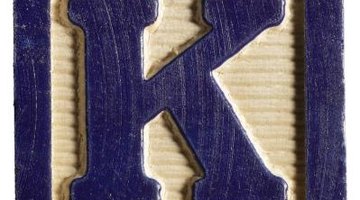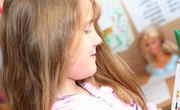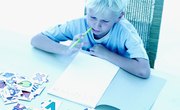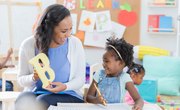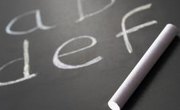If you teach kindergarten, then you spend a lot of time teaching the sounds of letters, beginning reading and spelling. Among the trickiest rules for kindergarten children to learn are the difference between the letters C and K and when to use which of those letters. While practice helps the children learn, the only prior knowledge they need is a firm understanding of vowel sounds.
Draw two columns on the chalkboard, one for words beginning with the letter C and one for words beginning with the letter K. Ask the kindergarten students to name words that begin with the K sound. Ask the students what letter they think each of those words begins with, and then write each word in its correct column.
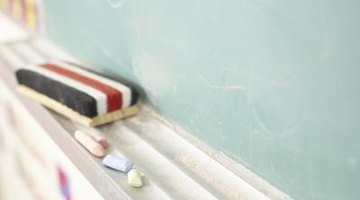
Ask the students if they notice anything about the words you wrote on the chalkboard. Underline the first vowel in each word. Ask again if they notice anything about the words. Explain that if a word's first vowel is an A, O or U, then the word usually begins with C. Then tell them that if a word's first vowel is an E or I, the word generally begins with K.
Review vowel sounds with the students. Then erase the words in each of the columns on the chalkboard. Show the students pictures of items that begin with the letter C and pictures of items that begin with the letter K. Have at least one picture to represent each first vowel. Examples of words that you can use include cat, cart, corn, cone, cup, ketchup, key, king and kid.

Ask the students to pronounce each item the pictures display. Ask, "What is this a picture of?" If the picture is of a kid, you may say, "A kid? Let's sound out 'kid:' /k/ /i/ /d/." Emphasize the first vowel, such as, "/i/, /i/ What letter makes the /i/ sound?" Allow the children to respond with "I." After they answer correctly, you may say, "So does this word start with C or K?" Allow the students to respond with "K," and say, "Great. 'K' is right." Put tape on the back of the picture, and choose a child to place the picture on the board in the correct column. Repeat the procedure with each card.
Tip
If the students have trouble making the connections with the first picture or two, do those yourself as examples for them to follow.
Tip
Have enough picture cards so that every child in the class has a turn.
Tip
Repeat miniature versions of this lesson every few days, or set up a station for C and K practice until you are certain every child mastered the skill.

Related Articles
References
Tips
- If the students have trouble making the connections with the first picture or two, do those yourself as examples for them to follow.
- Have enough picture cards so that every child in the class has a turn.
- Repeat miniature versions of this lesson every few days, or set up a station for C and K practice until you are certain every child mastered the skill.
Writer Bio
Dayle Fraschilla has been a freelance writer and editor since 2009. She is a guest writer for Commentarista.com and a Philadelphia charter school expert for a prominent website. She is a volunteer writer for "One Step Away," Philadelphia's street newspaper. She holds Bachelor of Arts degrees in elementary education, special education and psychology from Rider University.

